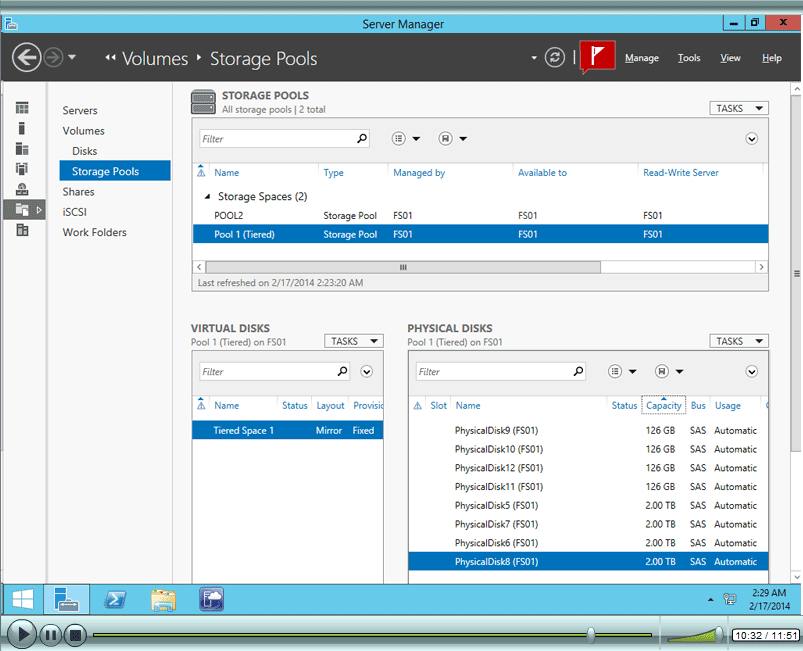In the following Screencast ![]() , we demonstrate how to configure Storage Tiers in Server 2012 R2 using SSD and Hard Drives within the same storage pool.
, we demonstrate how to configure Storage Tiers in Server 2012 R2 using SSD and Hard Drives within the same storage pool.
The whole process of configuring Storage Tiers with Server 2012 R2 is extremely simplified when using the graphical interface – Server Manager, and that’s what you will see in most demos. We do start with such an example in our Screencast, and then we take a closer look at some of the important Virtual Disk parameters (Number of Columns, Interleave, Write-Back Cache) that are configured automatically in the background by the wizard and affect most seriously the Storage Space performance. As you will find out, once the Virtual Disk is created, you cannot modify these parameters. The only way to change them is to delete and re-create the Virtual Disk. That brings the need to plan carefully, in advance your Storage Configuration.
We discuss in detail the meaning of these parameters and how to optimize them according to your needs in Step 2. Extending an existing tiered Storage Space is one of the typical examples when you need to be aware of these parameters before you proceed with adding the physical disks to the Storage Pool, and we demonstrate some of the most common mistakes.
While the Graphical Interface is perfect for demonstration purposes, most probably you will have to use PowerShell when implementing Tiered Storage in a production environment. Optimizing the interleave for applications like Microsoft SQL Server or Exchange Server, configuring the Number of Columns, and setting the Write-Back Cache is possible only in PowerShell. Step 3 is packed with tips and PowerShell action, and for you convenience we provide the text file with all commands that are used in the demo.
Tweet #Server2012R2 Follow @netometer
- How to Configure DHCP Failover in Windows Server 2012
- How to Migrate DHCP Server to Windows Server 2012
- How to Upgrade Active Directory Domain to Windows Server 2012
- How to Add a Second Server 2012 Domain Controller
- How to Install WordPress on Windows Server 2012


